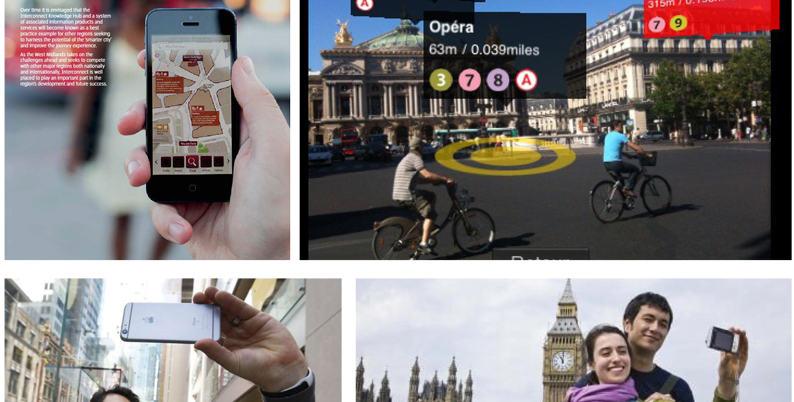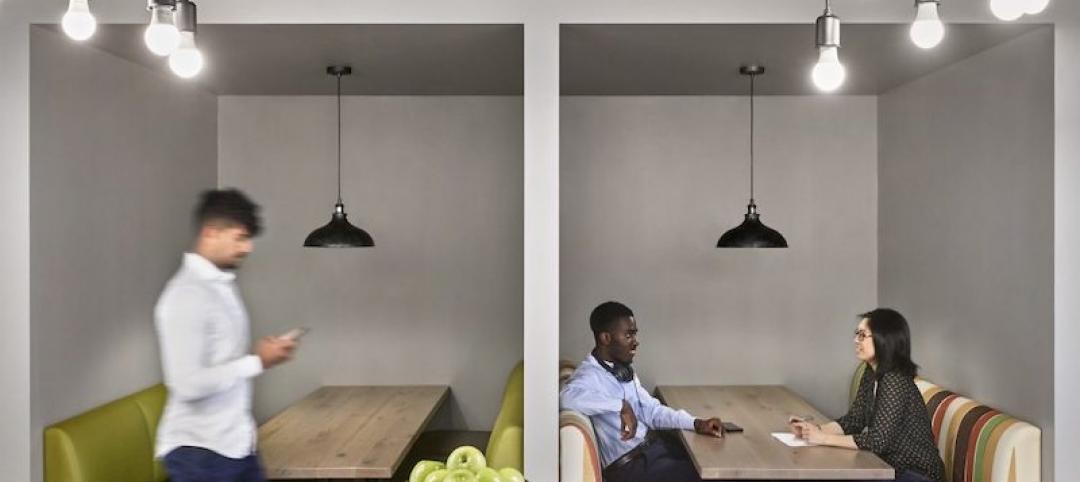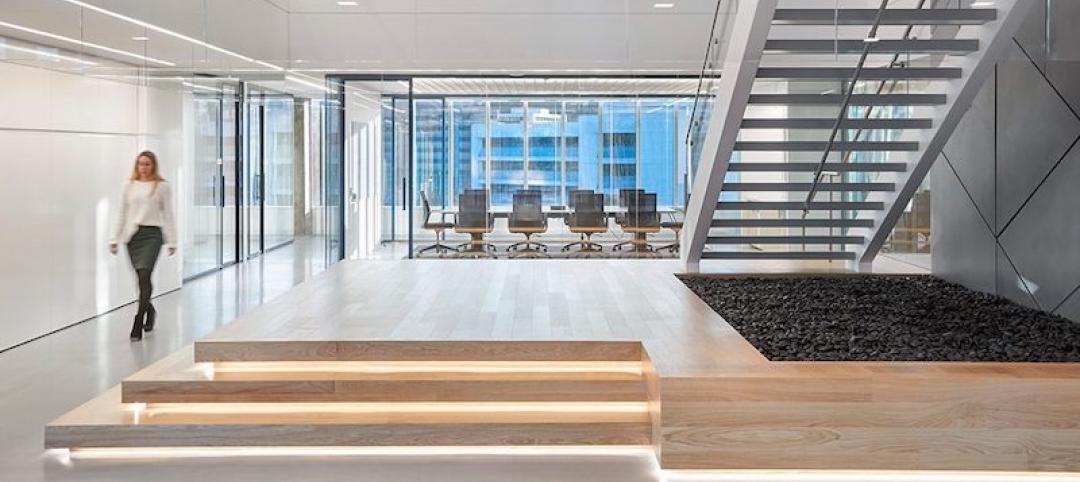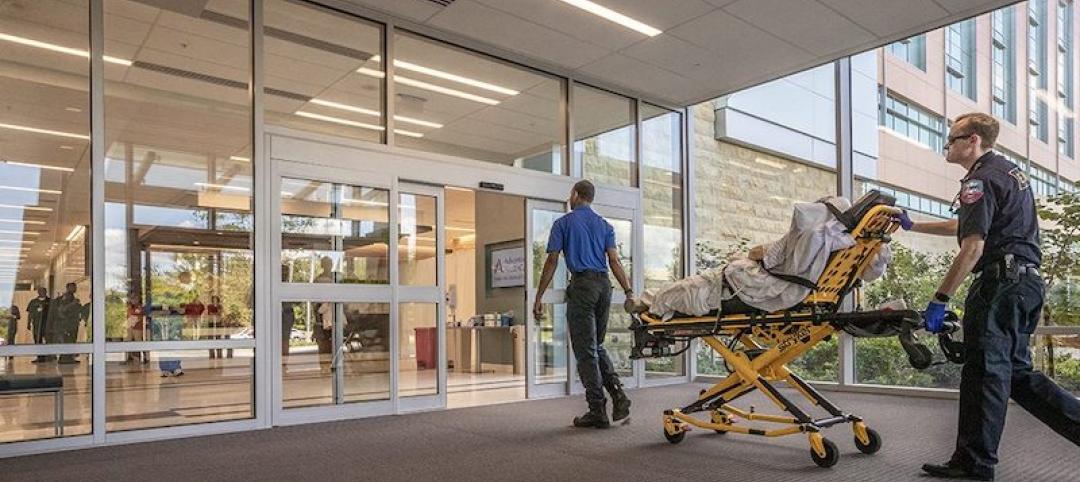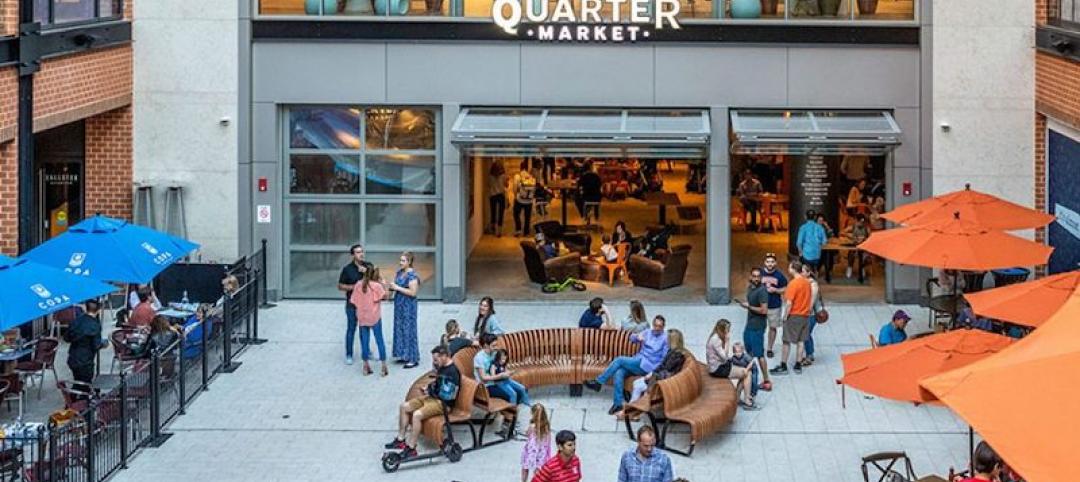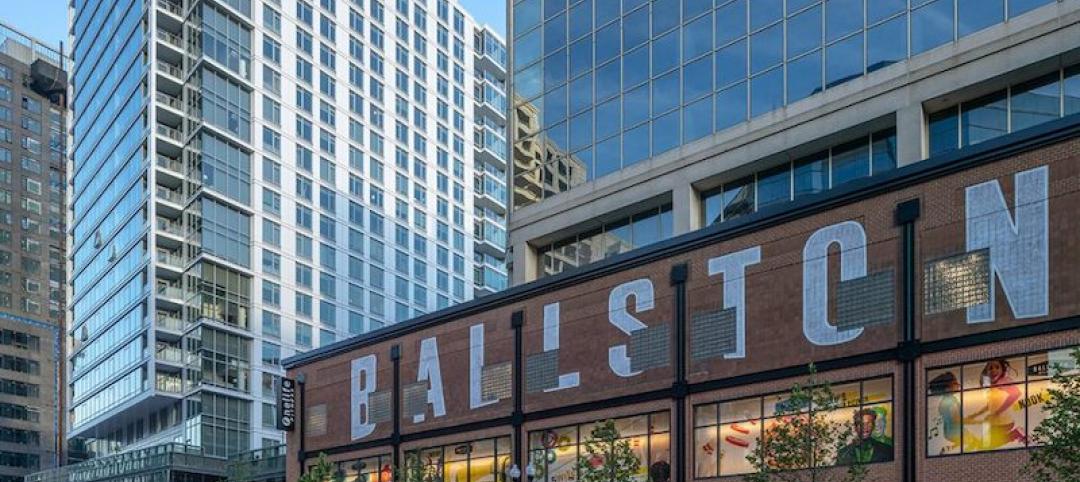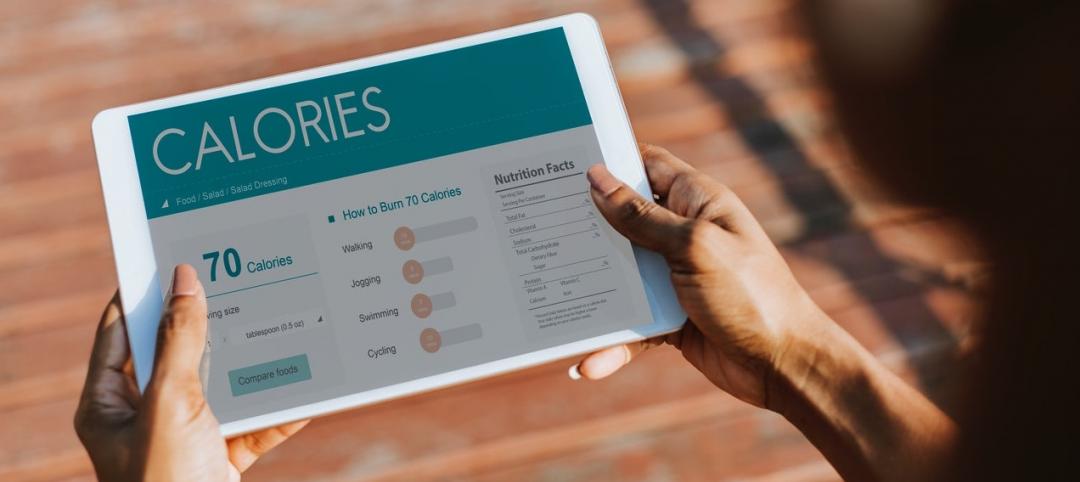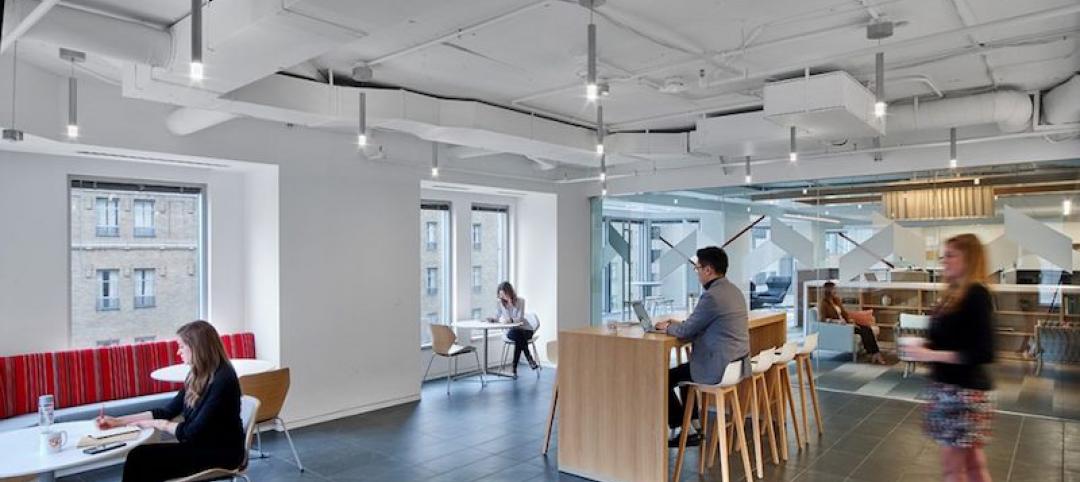The process of utilizing wayfinding as a series of language cues within the environment dates back centuries. The idea of creating a “legible” city has its roots in establishing a clear and cognitive system for any environment. But cities have changed, and the cues that allow the citizens to connect and understand the environment in which they participate are changing, too.
Advances in wayfinding have responded to our innate need to establish markers and identify patterns by creating immersive spatial relationships between users and areas. Signs, maps and directional aids remain in force, but there is now a digital framework that goes beyond providing basic information.
Applications like Bluetooth-driven Beacon systems and cellular Wi-Fi systems can now be used to help people navigate space in a more profound way and to enjoy richer, more fulfilling experiences. This expansion has encouraged the rise of multi-device connectivity, or “Omni-Channel Experience,” that can tell users where they are, where they need to be and what they need to do when they get there from any device.
But creating this omni-channel experience means big changes for cities—specifically soft-infrastructural improvements. Case in point is our city-wide wayfinding and place-making strategy and design for downtown Las Vegas. Our team collaborated alongside development and key stakeholders to reinvent the user experience by enhancing the wayfinding approach to boost civic pride and create a connected multi-modal experience through an evolving 2035 Downtown Master Plan. Our enhanced user journey incorporates real-time resources in combination with on-site wayfinding cues to create touch-points that promote better pathways and exploration throughout the city. Working in conjunction with the city’s chief technology officer, our team identified the need to utilize benchmark technologies to not only redefine the perception of the image of the city, but to serve as a future-oriented system that could evolve as new technologies came online.
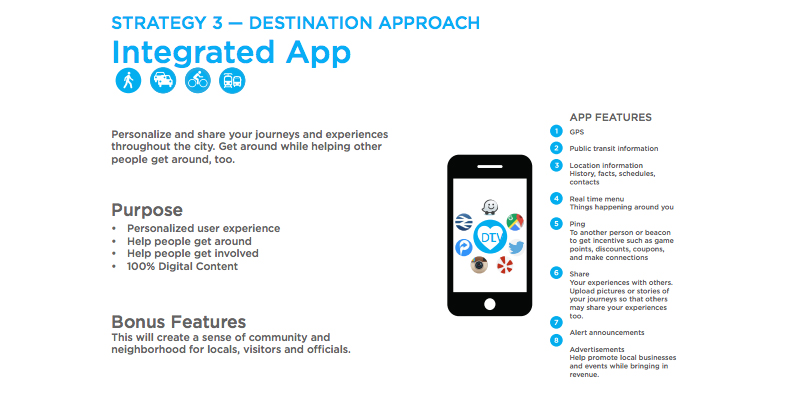
Through our early stage integration and collaboration process, we helped define key system attributes that would allow the public to engage in a completely experiential way. The following technologies are within the tool kit of the future-oriented system:
INTUITIVE CONTENT DELIVERY SOFTWARE: Cloud-based content delivery tools are what turn blank screens into dynamic signage. The software, then, is as important to imaginative implementations as the hardware.
OMNI-CHANNEL EXPERIENCE: Gen Z consumers are true omni-channel shoppers. They don’t just research merchandise online or go to a store to try it on or check it out on social media; they do all three. It’s more important than ever that digital signage is consistent with your brand and complements the online experience.
AUGMENTED PATHS NETWORK: Google and the San Jose Airport are testing the new ‘Tango’ technology platform in the terminal. This technology allows devices to utilize someone’s exact position relative to the space around them without GPS or additional external signals. This creates the possibility of location-based augmented reality (AR) within mobile applications.
USER-CREATED HYPER LOCAL CONDITIONAL NEEDS & PERSONALIZED GUIDANCE: Engaging visitors on a hyper-local level can multiply profits and increase foot traffic. Digital Social Retail estimates pushing a specific product on digital signage can increase sales more than 60 percent for that product. Digital signage creates a natural pathway for brands to reconnect with each local audience by tailoring the content to each specific audience.
SOCIAL MEDIA INTEGRATION: In 2016, it would barely be an exaggeration to say that everyone is on social media. With 74 percent of all adults on the internet and 81 percent of all small and medium businesses in America using at least one social network, odds are that both your customers and competitors are making use of the medium.
RESPONDING TO A CHANGING MARKET: The challenge with integrated technologies is the fingerprint that they leave on an environment. Designers are constantly performing balancing acts between the limitations of commercially viable technologies and the physical aspects of spatial design. We are now being asked to perform our services as technology stewards—makers of not only our craft but as conduits for all things technology.
This service expansion has pushed our internal education into hyper-drive. Our goal is not to have a technology conversation; it’s to have a user experience conversation. We are utilizing technology as one palette available to us in design. In order to achieve seamless environments, we are integrating the following aspects into our work:
• INTERFACE-LESS AND TOUCH-LESS INTERACTIVITY: The experience of interactivity has moved past pushing buttons with a programmed patterned response. We are looking for ways users can personalize their technology experience by gestural or facial recognition, interactive projected surfaces or other haptic touch technologies.
• SEAMLESS ENVIRONMENT PHILOSOPHY: During our strategic phase, we integrate our understanding of market dynamics, urban planning, architecture and wayfinding to create a series of tangible and intangible cues for the user journeys. These cues, such as online journey mapping tools to interactive gateway installations within a plaza, become touchpoints within a project or city. This integrated approach allows us to coordinate experience, placement and construction specifications early in the process and necessary infrastructure.
• CREATING BRANDED EXPERIENCES: From development capital summaries to leasing strategies or neighborhood event marketing, our brands provide the framework to deliver pointed messages to an audience.
• NEXT-GEN HAPTIC TOUCH TECHNOLOGY: Since physical keyboards on smartphones are becoming less desirable, designers and programmers have been developing alternate tactile interactive methods. The desire to produce this tech will create an entirely new method of interactivity. Through virtual keyboards or gestural controls, the next-generation will address the market needs of diversity of experience and personal control.
About the Author: Cody Clark, LEED GA, is a vice president with CallisonRTKL in the Los Angeles office where he leads the Environmental Graphics Studio. Cody specializes in wayfinding and environmental graphics for mixed-use retail, residential, office, civic, hospitality and healthcare projects.
More from Author
CallisonRTKL | Dec 20, 2021
Digital nomads are influencing design
As our spaces continue to adapt to our future needs, we’ll likely see more collaborative, communal zones where people can relax, shop, and work.
CallisonRTKL | Jun 30, 2020
The great reset and our new work life
As many countries begin to return to the office, it’s a chance to ask ourselves: what do we truly value?
CallisonRTKL | May 4, 2020
How working from home is influencing design
The lessons learned in the next few months can help shape how we work and design in the future. For now, remote work is different – and our new normal.
CallisonRTKL | Feb 26, 2020
Sustainability in a material world
The concepts of embodied carbon, zero waste, and deconstruction and reuse often run on parallel tracks.
CallisonRTKL | Jan 30, 2020
The complex dance of healthcare transitioning
Hospital employees, though excited about technological advancements, are expected to navigate a new workplace and care for their patients at the same time, all while training on new equipment and navigating a new building.
CallisonRTKL | Jan 6, 2020
Retail re-invention: Five questions to ask
Why have some malls survived their long-predicted demise, thriving and bumping with new generations of shoppers, while others have been relegated to the ash heap of deadmalls.com?
CallisonRTKL | Aug 6, 2019
Saving the American mall in 5 steps
CallisonRTKL Vice President Marc Fairbrother explains how struggling American malls can turn it all around.
CallisonRTKL | May 29, 2019
Smart buildings can optimize wellness
Employees want wellness initiatives built into their work experience, especially when they’re in spaces that can leave them feeling stiff, stressed, and sick.
CallisonRTKL | Apr 5, 2019
2019 trends in the workplace
From retention and career advancement to the ethics of inclusion and diversity, these five trends will play a major role this year in design, strategic planning and workplace development.
CallisonRTKL | Jan 28, 2019
9 tech trends to track in 2019
Innovations in voice recognition, cognitive neuroscience, and biometrics are among the trending tech topics for 2019, according to CallisonRTKL's Kristin Tilley.

